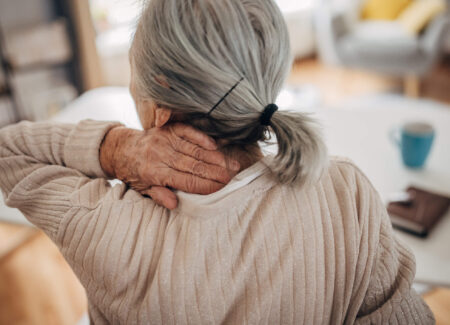
Tenderness and pain in the area where the abdomen meets the top of your legs can be signs of a pulled groin. Over-stretching or tearing of the groin and thigh muscles is a common injury that occurs in sports, especially in hockey, football, and soccer. You can also pull a groin off the field or the rink while doing simple, everyday tasks.
Mild groin pulls heal with rest and self-care. More severe injuries require physical therapy to stretch and strengthen the affected muscles, regain full range of motion, and prevent re-injury. Learn more about how to treat a pulled groin below.
The adductor muscle group comprises six groin muscles that run from the inner pelvis down to the inner part of the thigh bone (femur.) The adductors pull the legs together, rotate the upper thighs inward, and stabilize the hips.
Groin pain can occur if these muscles— and/or connective tendons and ligaments— overstretch or tear due to repetitive stress or overuse. This type of injury is common among athletes who do a lot of jumping and running. A single trauma (like a fall or a tackle) can also cause a groin injury, along with sudden stops and starts. Groin strains also occur from motions that involve extreme force, like lifting or pushing a heavy object.
Typical signs and symptoms of a groin pull include:
While most symptoms are local at the injury site, it is also possible to experience pain in the pelvis, lower back, and hips.
If you are having unexplained groin pain, your healthcare provider or physical therapist will discuss your health history and what you were doing when you first noticed symptoms. They will give you a thorough physical exam and may also order tests to rule out other conditions like a hernia or joint injury.
Grade 1
There is slight tearing or overstretching of the muscle. Pain is mild, but strength and function are close to normal.
Average recovery time: 4-6 weeks
Grade 2
There is more extensive damage to groin muscle fibers. Pain and tenderness are more intense. Loss of muscle strength is mild to moderate. Bruising is possible.
Average recovery time: 2-3 months
Grade 3
Pain is severe. Bruising is possible. A complete tear of muscle tissue results in significant loss of muscle function and strength. Surgery may be necessary to repair torn fibers.
Average recovery time: 4+ months
Treatment for a pulled groin varies based on the extent of tissue damage. Mild, grade-1 injuries often respond well to conservative treatments, while severe tears require more complex treatment and a longer recovery.
Treatment for a pulled groin typically follows the P.E.A.C.E & L.O.V.E protocol for soft tissue injuries.
P – Protection:Refrain from activities that increase groin pain for the first few days after an injury.
E – Elevation: Keep the affected limb above the heart as much as possible following a groin pull.
A – Avoid: Avoid taking anti-inflammatory medications that can slow healing.
C – Compression: Compress the injured area with tape or a bandage.
E – Education: Listen to your body and avoid unnecessary treatments.
And
L – Load: Follow your body’s lead to determine when it’s safe to gradually increase load.
O – Optimism:Stay positive, optimistic, and mentally strong to optimize your recovery.
V – Vascularization: Choose safe, gentle cardiovascular physical activities to boost blood flow and promote healing.
E – Exercise: Add exercise gradually to restore mobility, function, and strength.
Physical therapy offers safe, appropriate stretching and strengthening techniques to help injured patients gradually resume activity and restore function after a groin pull. Strategic exercises and stretches make the adductors stronger and more flexible—to help prevent future injuries. If you play sports, your physical therapist will evaluate your progress to determine when you’re ready to return to play.
Self-treatment and physical therapy for groin pulls are effective for mild injuries. However, if you cannot move your leg, have numbness, tingling, or have severe pain or swelling, seek immediate medical care.
Possibly. Good physical conditioning can help prevent groin pulls. As “movement experts,” physical therapists are trained to help patients of all ages and activity levels move and feel better. Whether you are an elite athlete preparing for your upcoming season, or just want to stay active and mobile without pain, physical therapy can help.
Your physical therapist creates a personalized treatment program to strengthen and stretch the groin and core muscles and stabilize the pelvis. These stretches and exercises are designed to increase muscle strength and flexibility, so they are less prone to tears.
With that said, not all groin tears are preventable. If you do get hurt and your groin pain doesn’t improve in a few days, see your healthcare provider, or schedule a physical therapy evaluation to evaluate your symptoms and move ahead with treatment. Find a physical therapy clinic near you.

